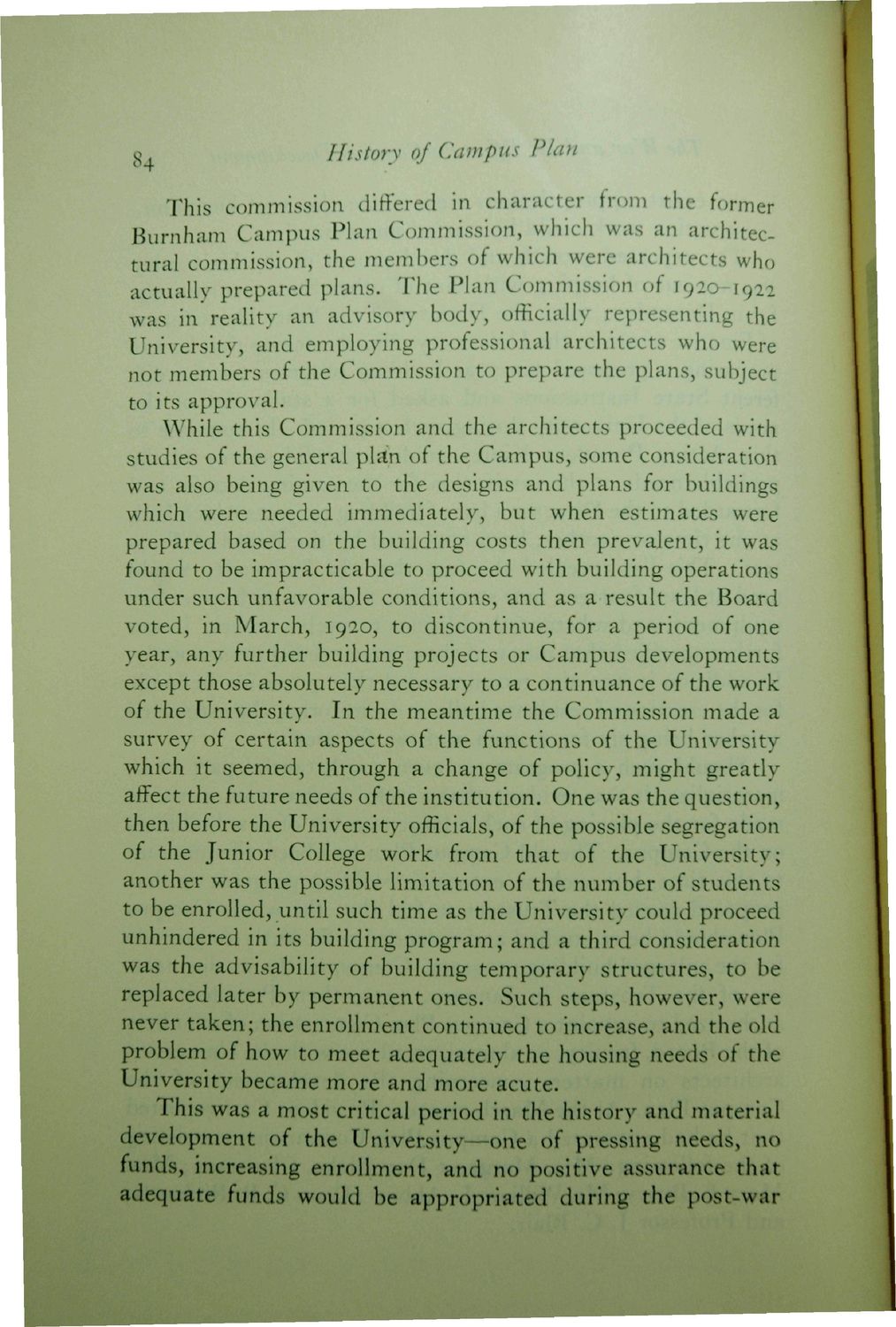| |
| |
Caption: Book - 30 Year Master Plan (Tilton & O'Donnell)
This is a reduced-resolution page image for fast online browsing.

EXTRACTED TEXT FROM PAGE:
g History of Campus Plan This commission differed in character from the former Burnham Campus Plan Commission, which was an architectural commission, the members of which were architects who actually prepared plans. The Plan Commission of 1920-1922 was in reality an advisory body, officially representing the University, and employing professional architects who were not members of the Commission to prepare the plans, subject to its approval. While this Commission and the architects proceeded with studies of the general plain of the Campus, some consideration was also being given to the designs and plans for buildings which were needed immediately, but when estimates were prepared based on the building costs then prevalence it was found to be impracticable to proceed with building operations under such unfavorable conditions, and as a result the Board voted, in March, 1920, to discontinue, for a period of one year, any further building projects or Campus developments except those absolutely necessary to a continuance of the work of the University. In the meantime the Commission made a survey of certain aspects of the functions of the University which it seemed, through a change of policy, might greatly affect the future needs of the institution. One was the question, then before the University officials, of the possible segregation of the Junior College work from that of the University; another was the possible limitation of the number of students to be enrolled, until such time as the University could proceed unhindered in its building program; and a third consideration was the advisability of building temporary structures, to be replaced later by permanent ones. Such steps, however, were never taken; the enrollment continued to increase, and the old problem of how to meet adequately the housing needs-of the University became more and more acute. This was a most critical period in the history and material development of the University—one of pressing needs, no funds, increasing enrollment, and no positive assurance that adequate funds would be appropriated during the post-war
| |